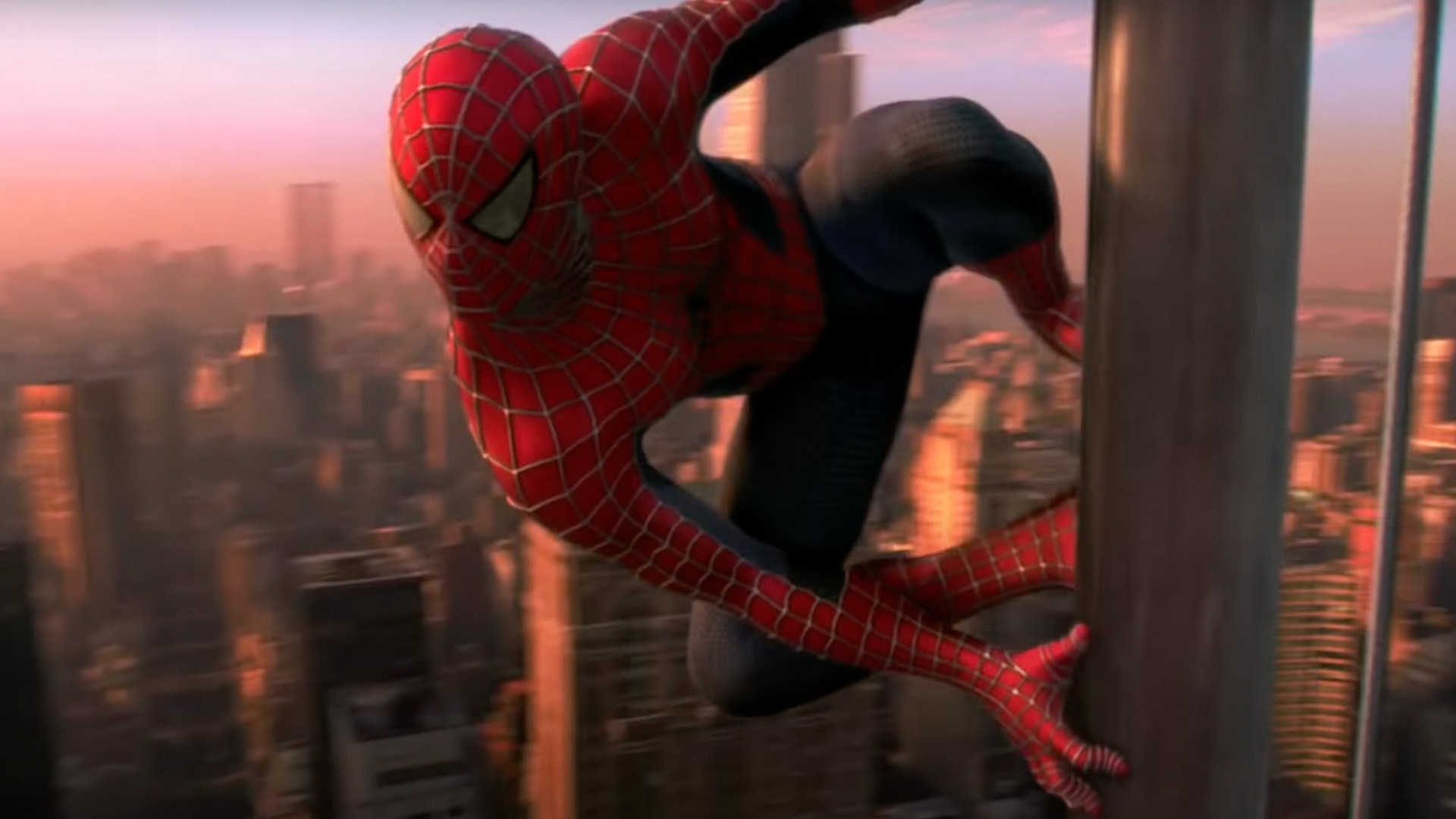Create a free profile to get unlimited access to exclusive videos, sweepstakes, and more!
In 'Spider-Man,' you don't need to worry about how Spidey gets his costume
You shouldn't spend a lot of time wondering how Spider-Man got his costume in Sam Raimi's 2002 movie. The filmmakers didn't.

Although it was the tagline to a movie about the Man of Steel, and not a friendly neighborhood web-slinger, 1978's Superman perfectly gets right one of the many things that makes Sam Raimi’s Spider-Man, released 20 years ago (on May 3, 2002) so great: “You’ll believe a man can fly.”
Sure, Marlon Brando’s floating head explains that Superman can fly because of his alien biology and our sun’s yellow rays, but the movie isn’t overly concerned with showing audiences how or why this works. That’s not the point. We simply believe a man can fly.
Spidey doesn’t fly, but so much of the magic of Raimi’s movie comes from a similar place. Spider-Man skirts over details and doesn’t trouble itself too much with explanations. In a lesser movie, these omissions might be considered “plot holes.” But, because Raimi has such a confident grasp of the emotional and visual storytelling of this genre — not to mention an understanding of how comic books feel — his first Spider-Man movie is a shining example of the magic of “don’t worry about it.”
Consider this: Where does Peter Parker get his costume? You may have pondered this before, or seen it pointed to as a plot hole on some CinemaSins-esque video or website. But, I’m willing to bet it didn’t even cross your mind when you saw Spider-Man for the first time.
Is it a little strange that Peter Parker — a kid whose family poverty is established over and over again in these movies — suddenly goes from wearing a spray-painted sweatshirt to a slick, elaborate superhero costume? Sure, but the movie doesn’t give you time to think about that. The costume makes its debut after Peter, wearing his DIY, proto-Spider-Man costume, is at his lowest and has just learned, the hard way, that with great power there must also come great responsibility. When we next see the web-slinger, he’s dashing across the skyline in his trademark Spidey suit. The hero has arrived.
How he got this suit is immaterial. This Spider-Man movie would not be improved by a scene — or even a throwaway line of dialogue — where Peter mentions that he found some great stuff in the dumpsters of the fashion district. He just has the suit because he is Spider-Man. We believe that he is Spider-Man, and there’s no need to worry about the details.
Why does the prototype glider that Oscorp developed for the U.S. military come with a suit that has a helmet that can be conveniently sculpted into a big, green goblin-shaped head? Don’t worry about it. Raimi and screenwriter David Koepp's storytelling instincts, paired with Willem Dafoe’s acting and incredible facial contortions, have convinced us that he’s the Green Goblin. In later Spider-Man movies, too, Raimi adopts the same ethos. Why is there a dangerous sun fusion reactor on the East River in New York City? Don’t worry about it. What is there a subway line in Spider-Man 2 that seemingly runs for miles above ground in midtown Manhattan, where all of the real subway lines are underground? Again, do not worry about it.
The emotional and storytelling narrative of Raimi’s first two Spider-Man movies is near-perfect, and it wouldn’t be improved by detours that explain what could be considered contrivances. Spider-Man’s suit is a key aspect of his character. How he gets it, less so.
There’s actually one part of Spider-Man where the movie explicitly leans into the “don’t worry about it” by making a change from the source material. Tobey Maguire’s Spider-Man has organic web-shooters, whereas in the comics (and the Amazing and MCU Spider-Man films) he has to build them. This was actually James Cameron’s idea from a scriptment he wrote in the '90s, but Koepp happily adopted them for the 2002 film.
While having organic rather than man-made web-shooters does obscure Peter’s inventiveness while hyping up the puberty-like metaphor of Spider-Man’s mutation, that’s not why the change works so well in the movie. The tightness of the 2002 Spider-Man story wouldn’t be helped by a scene where Peter invents web-shooters. He can just shoot webs. That’s all you need, and it works.
You’ll believe a man can web-sling. Don’t worry about how.


























